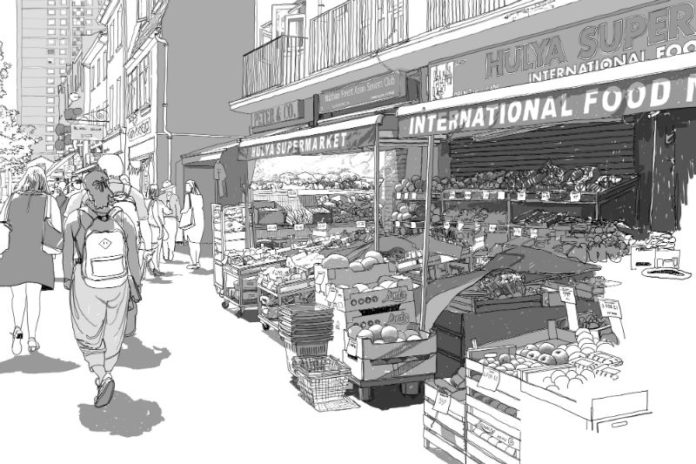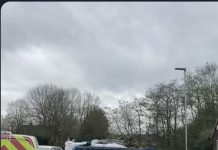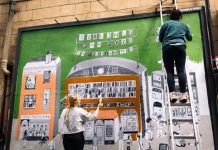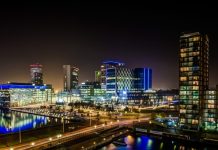The extraordinary stories behind the transformation of 100 British high streets will be uncovered by a new visual research project in Manchester.
Tales of the High Street will delve into the personal stories of a wide cross-section of high streets and town centres across the country – from Doncaster and Altrincham to Folkestone and Totnes – both of those that are struggling alongside those that have bucked the national trend.
Researchers will explore large metropolitan centres, out-of-town shopping centres and smaller towns, aiming to colourfully illuminate the variety of forces at play in the decline of the high street, while highlighting inspiring examples of grassroots success and what wider lessons can be drawn.
URBED+, a new research partnership between design consultancy URBED and Manchester School of Architecture at Manchester Metropolitan University, has been awarded £100,000 by the Royal Commission for the Exhibition of 1851 in the form of a Built Environment Fellowship to undertake the two-year project.
The fellowship enables postgraduates, researchers, practitioners or professionals on a career break, to carry out research culminating in a milestone output of significance on a specific area of interest around the built environment. This year the topic was ‘What is the High Street for?’ and previous topics have included ‘genetics and the built environment’ and ‘towns and cities in shock’.
Dr Lucy Montague, Senior Lecturer in Architecture at Manchester School of Architecture, and URBED colleagues will conduct in-depth research into each chosen high street, interviews with key local individuals, businesses and policy-makers and sophisticated urban mapping and site surveys.
Researchers hope that this narrative process will draw out evocative tales of these streets not only as shopping centres, but as leisure destinations and shop windows for what matters to a local community.
Dr Montague said: “Research often aims to draw universal conclusions, and to make itself useful by producing examples of best practice and toolkits that can be widely applied. By looking across 100 high streets we will understand how much more specific and nuanced the task of sustaining high streets is, capturing the particularities of different situations and understanding the importance of bottom-up activities which cannot be prescribed by policy.
“In this way we hope to illuminate the many different ways in which high streets can succeed or fail, and to inspire more places to take action.”
The results will be presented in a beautifully illustrated book that communicates these powerful stories in an engaging way, through hand-drawn illustrations, maps and infographics. An open-source online compendium of the 100 high streets will also enable people to suggest, comment and share stories of the High Street.
The research ultimately aims to help policymakers and urban regeneration professionals understand the issues they are facing, both of those that are unique to one place and trends which could inspire future work. URBED’s work on the High Street dates back to the mid-1990s when they developed a methodology for town centre health checks and wrote the Government’s good practice guide Vital and Viable Town Centres.







